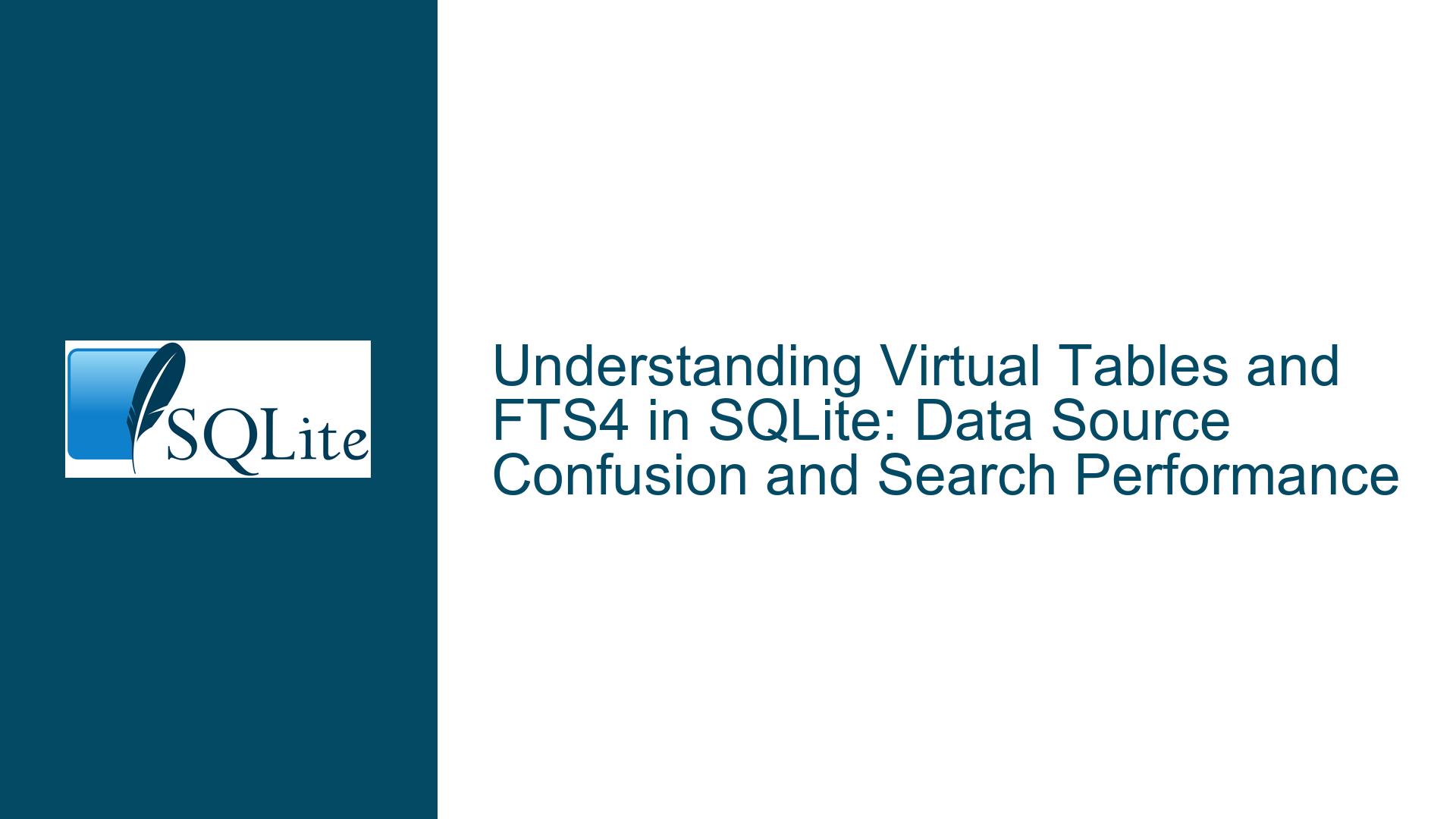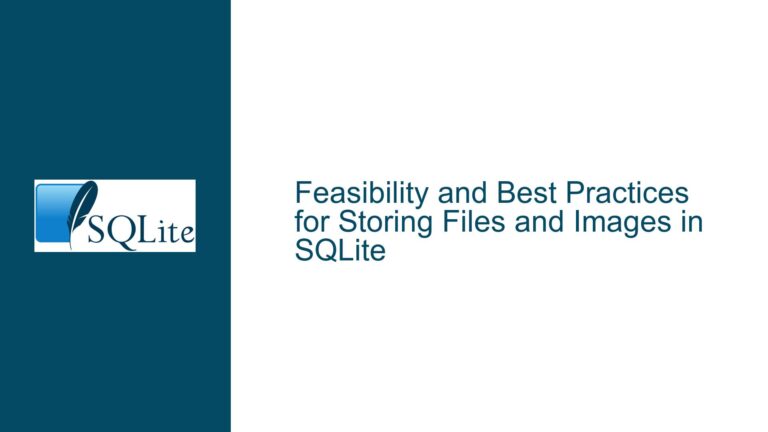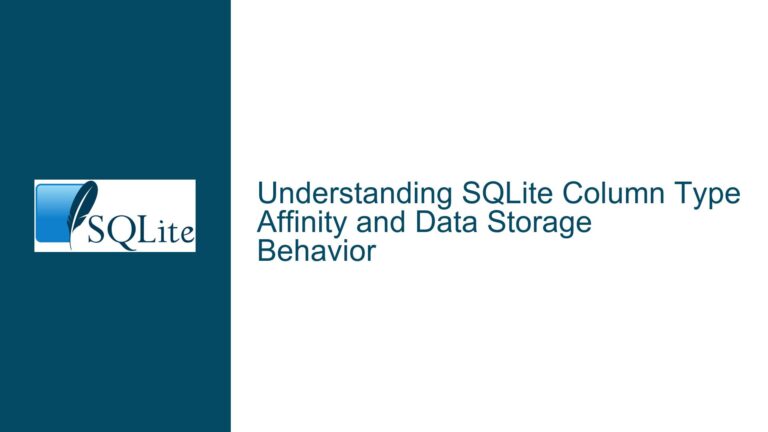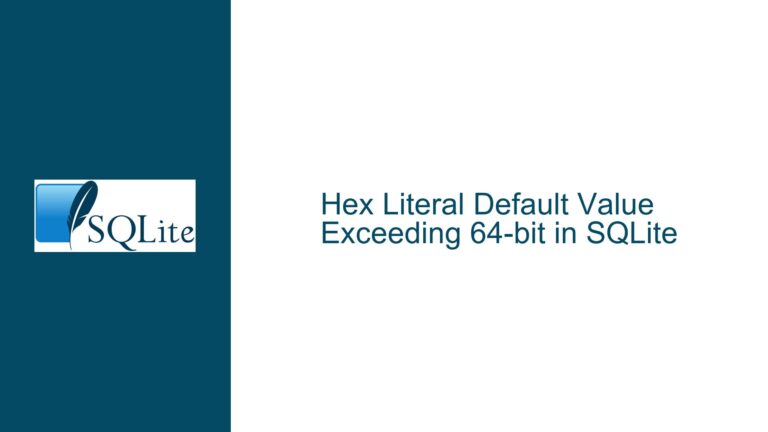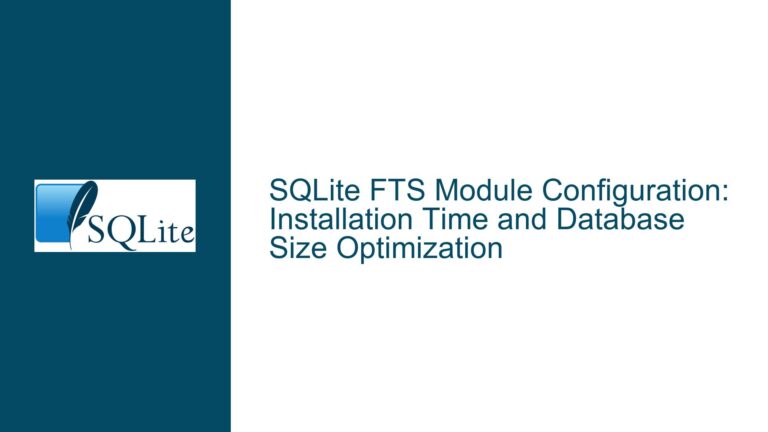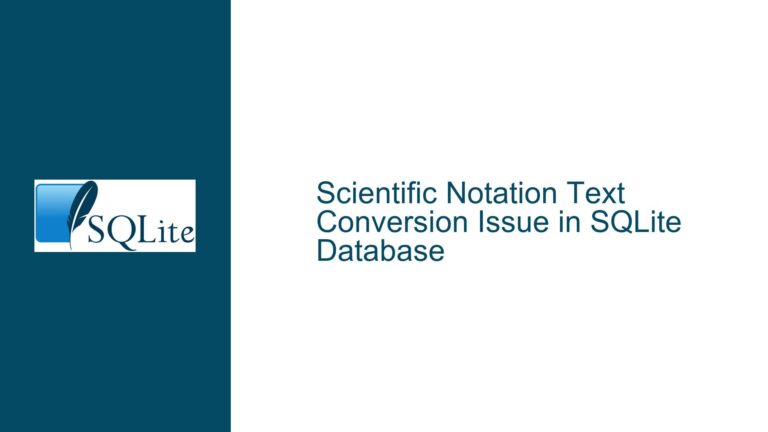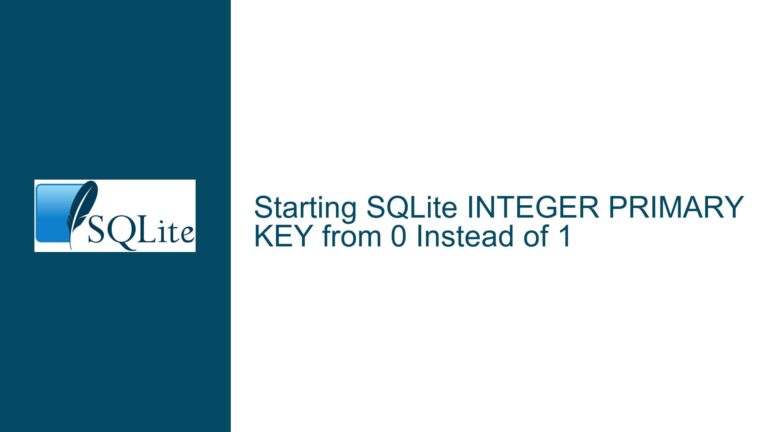Virtual Tables and FTS4 in SQLite: Data Source Confusion and Search Performance
Virtual Table Data Source Confusion in FTS4 Implementation
When working with SQLite’s Full-Text Search (FTS) capabilities, particularly FTS4, one of the most common points of confusion revolves around the nature of virtual tables and where their data originates. A virtual table in SQLite, such as one created using FTS4, does not store data in the traditional sense. Instead, it acts as an interface to data that is stored elsewhere, often in auxiliary tables that are managed internally by SQLite. This can lead to confusion when trying to trace the source of data for each field in the virtual table.
In the case of an FTS4 virtual table, the data is stored in a set of underlying tables that are automatically created and managed by SQLite. These tables include exploits_content, exploits_segments, exploits_segdir, exploits_docsize, and exploits_stat. Each of these tables serves a specific purpose in the FTS4 implementation. For example, exploits_content stores the actual content of the documents, with each column corresponding to a field in the virtual table. The exploits_segments and exploits_segdir tables are used to manage the indexing of the content, while exploits_docsize and exploits_stat store metadata about the documents and the index.
The confusion often arises because the virtual table itself does not directly expose these underlying tables. Instead, it presents a unified interface that allows you to query the data as if it were stored in a single table. This abstraction is powerful but can be disorienting when you need to understand the exact source of each piece of data. For instance, if you query the exploits virtual table, you are actually querying the exploits_content table, but this is not immediately obvious from the virtual table definition.
To trace the source of data for each field in the virtual table, you need to examine the structure of the underlying tables. The exploits_content table, for example, has columns named c0id, c1title, c2published, c3description, c4sourceData, and c5vhref, which correspond to the id, title, published, description, sourceData, and vhref fields in the virtual table. This mapping is not explicitly documented in the virtual table definition, which can lead to confusion.
Interrupted Write Operations Leading to Index Corruption
One of the potential issues that can arise when using FTS4 in SQLite is index corruption, particularly when write operations are interrupted. This can happen, for example, if there is a power failure or if the application crashes while the FTS4 index is being updated. When this occurs, the index may become inconsistent with the underlying data, leading to incorrect search results or even complete failure of the FTS4 functionality.
The FTS4 index is stored in the exploits_segments and exploits_segdir tables, which contain the segmented data and the directory structure for the index. If a write operation is interrupted, these tables may end up in an inconsistent state. For example, a segment might be partially written, or the directory structure might point to segments that no longer exist. This can cause the FTS4 engine to return incorrect results or fail to find documents that should match the search criteria.
Another potential cause of index corruption is the use of the exploits_docsize table, which stores the size of each document in the index. If this table becomes corrupted, the FTS4 engine may incorrectly calculate the relevance of documents, leading to incorrect search rankings. Similarly, the exploits_stat table, which stores statistical information about the index, can also become corrupted, leading to incorrect results.
To mitigate the risk of index corruption, it is important to ensure that write operations are completed successfully and that the database is not left in an inconsistent state. This can be achieved by using SQLite’s transaction mechanism to ensure that all changes are committed atomically. Additionally, it is important to regularly back up the database to minimize the impact of any corruption that does occur.
Implementing PRAGMA journal_mode and Database Backup
To address the issues of index corruption and data source confusion in FTS4, it is essential to implement robust database management practices. One of the most effective ways to prevent index corruption is to use SQLite’s PRAGMA journal_mode setting to ensure that changes to the database are logged and can be recovered in the event of a crash. The journal_mode setting controls how SQLite handles the write-ahead log (WAL), which is used to ensure atomicity and durability of transactions.
The PRAGMA journal_mode can be set to one of several values, including DELETE, TRUNCATE, PERSIST, MEMORY, and WAL. The WAL mode is particularly useful for FTS4 because it allows multiple readers and writers to access the database simultaneously without blocking each other. This can significantly improve performance, especially in applications that require frequent updates to the FTS4 index. Additionally, the WAL mode provides better crash recovery, as changes are written to a separate log file before being applied to the main database file.
In addition to setting the journal_mode, it is important to implement a regular backup strategy for the database. This can be done using SQLite’s built-in backup API, which allows you to create a copy of the database while it is still in use. The backup API ensures that the copy is consistent, even if changes are being made to the database during the backup process. This is particularly important for FTS4, as it ensures that the index and the underlying data remain consistent.
To further protect against data loss, it is also a good idea to periodically check the integrity of the database using the PRAGMA integrity_check command. This command scans the database for inconsistencies and reports any issues that it finds. If any issues are detected, they should be addressed immediately to prevent further corruption.
In summary, understanding the source of data in an FTS4 virtual table and preventing index corruption are critical aspects of managing an SQLite database with full-text search capabilities. By examining the underlying tables, implementing robust transaction management, and regularly backing up the database, you can ensure that your FTS4 implementation remains reliable and performs well. Additionally, using the PRAGMA journal_mode setting and the backup API can help protect against data loss and ensure that your database can recover from crashes or other interruptions.
